Flash Accounting
Flash Accounting
In previous versions of Uniswap, every time a swap was made - including multi-hop swap - tokens were transferred between Pool contracts for intermediate steps.
This design incurred inefficiencies because transferring tokens with external calls to their smart contracts - especially in a multi-hop swap - is quite expensive. This design was required since each pool was its own contract and token transfers were required to maintain accounting and solvency.
With the singleton architecture, a better design was possible and is referred to as Flash Accounting. The design became practical with gas efficiencies of Transient Storage. Flash Accounting further reduces the gas cost of trades that cross multiple pools and supports more complex integrations with Uniswap v4.
With flash accounting, each balance-changing operation (e.g. swap and liquidity modification) updates an internal net balance known as delta. Only the final balance-changes require token transfers.
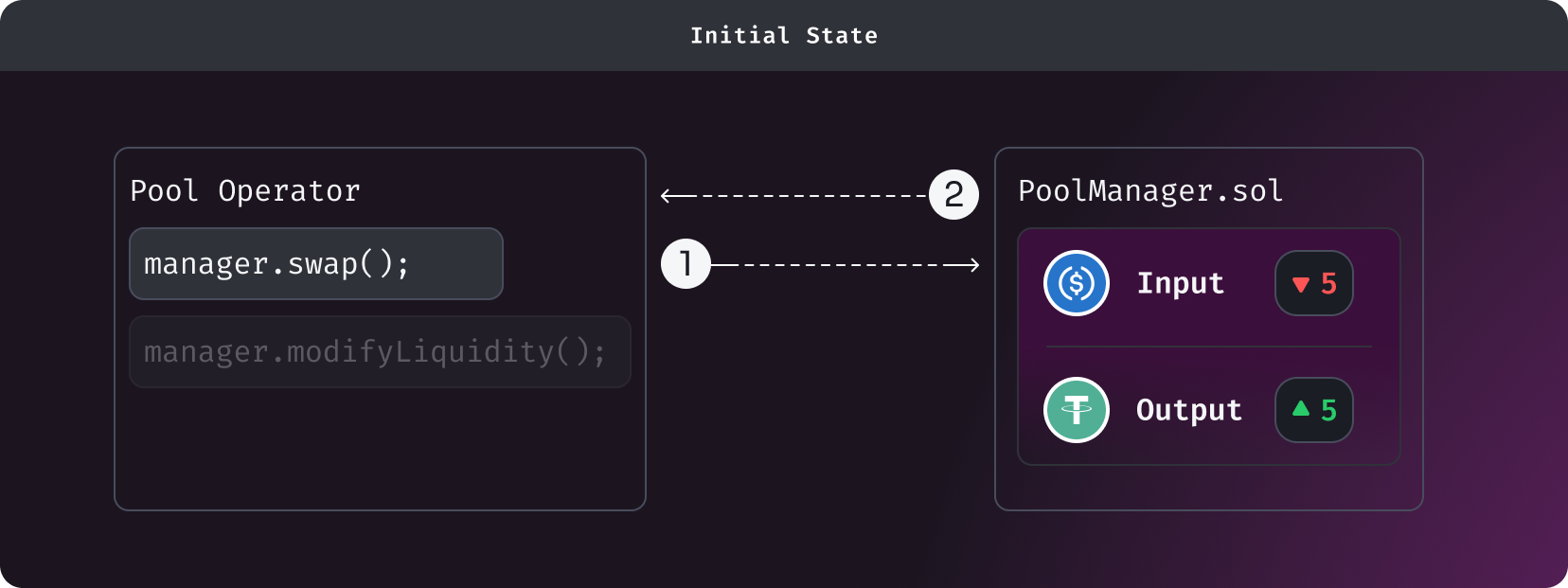
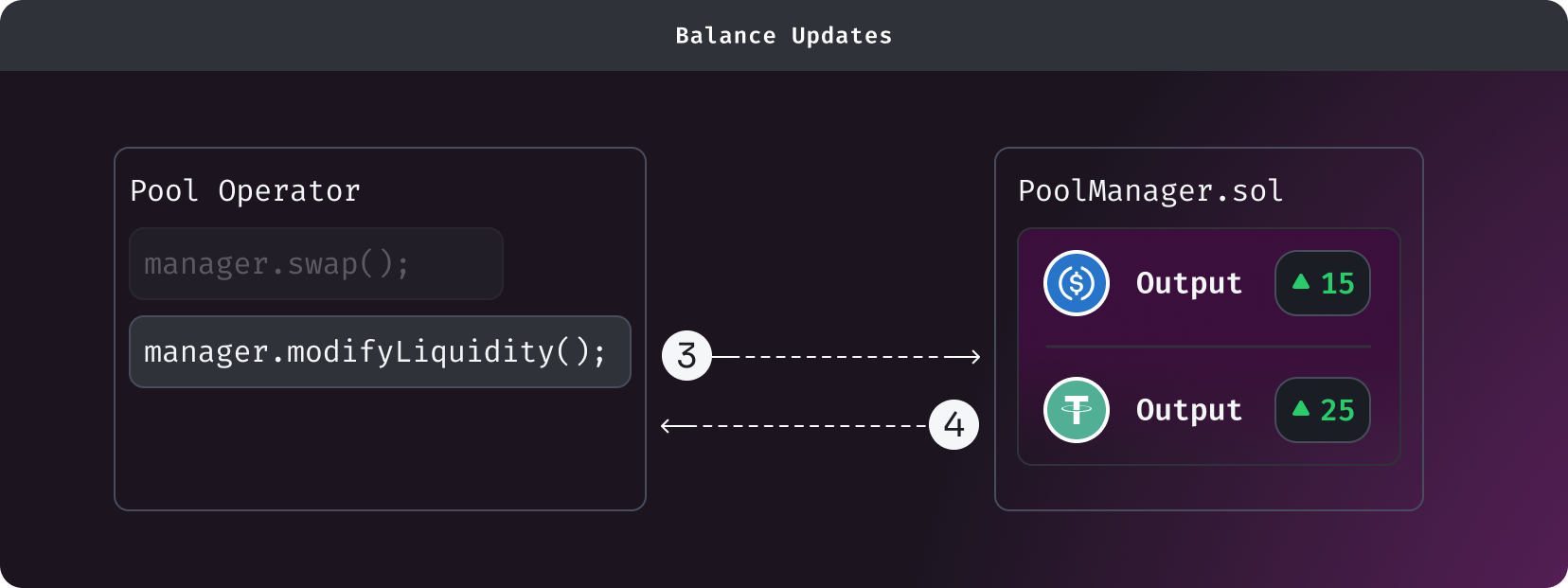
For example from the above diagrams - let's say you have 20 USDC and 20 USDT but you want to add liquidity with 15 USDC and 25 USDT. Previously this would require multiple external calls as tokens were transferred between Pool contracts when swapping from USDC to USDT. But now with v4's Flash Accounting we only need to keep track of delta - thus we can swap and modifyLiquidity in a single call and only the final balance-changes involve actual token transfers.
In the above example, we are swapping 5 USDC to 5 USDT to create liquidity with 15 USDC and 25 USDT. In between the operations (swap, modifyLiquidity), no token transfers are made
Mechanism
Locking
To ensure correctness and atomicity in complex operations like a multi-hop swap - v4 uses a locking mechanism. Anytime key actions need to take place within the PoolManager - e.g. swaps and liquidity modification - a periphery contract must unlock the PoolManager first. Then integrators implement the unlockCallback and proceed with any of the following actions on the pools:
- swap
- modifyLiquidity
- donate
- take
- settle
- mint
- burn
- sync
Note that pool initialization can happen outside the context of unlocking the PoolManager, as there are no balance-changing operations associated with pool creation.
The following diagrams visualize how the above steps will be implemented:
-
unlockthePoolManager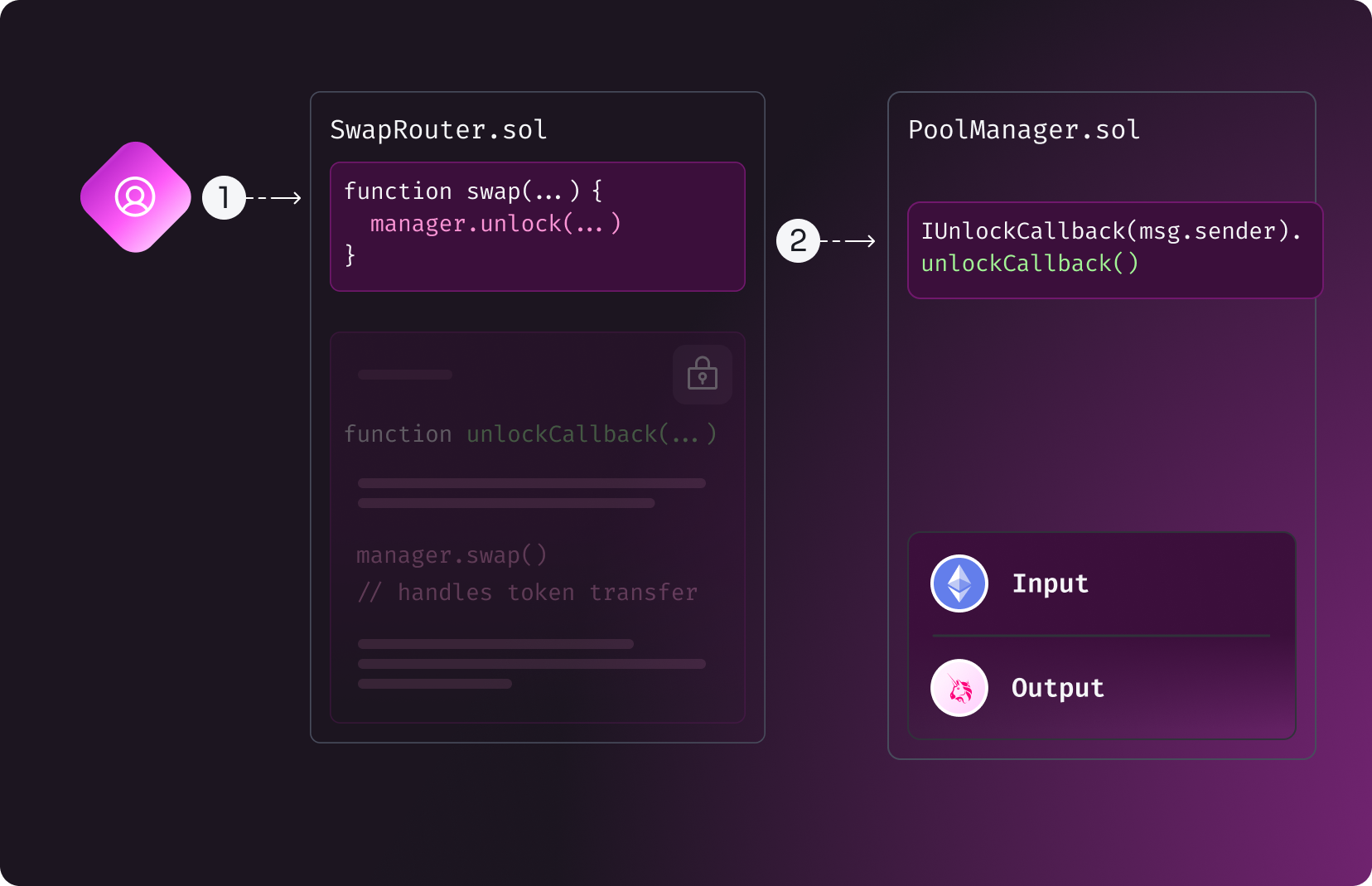
-
Implement
unlockCallbackand proceed with any desired pool actions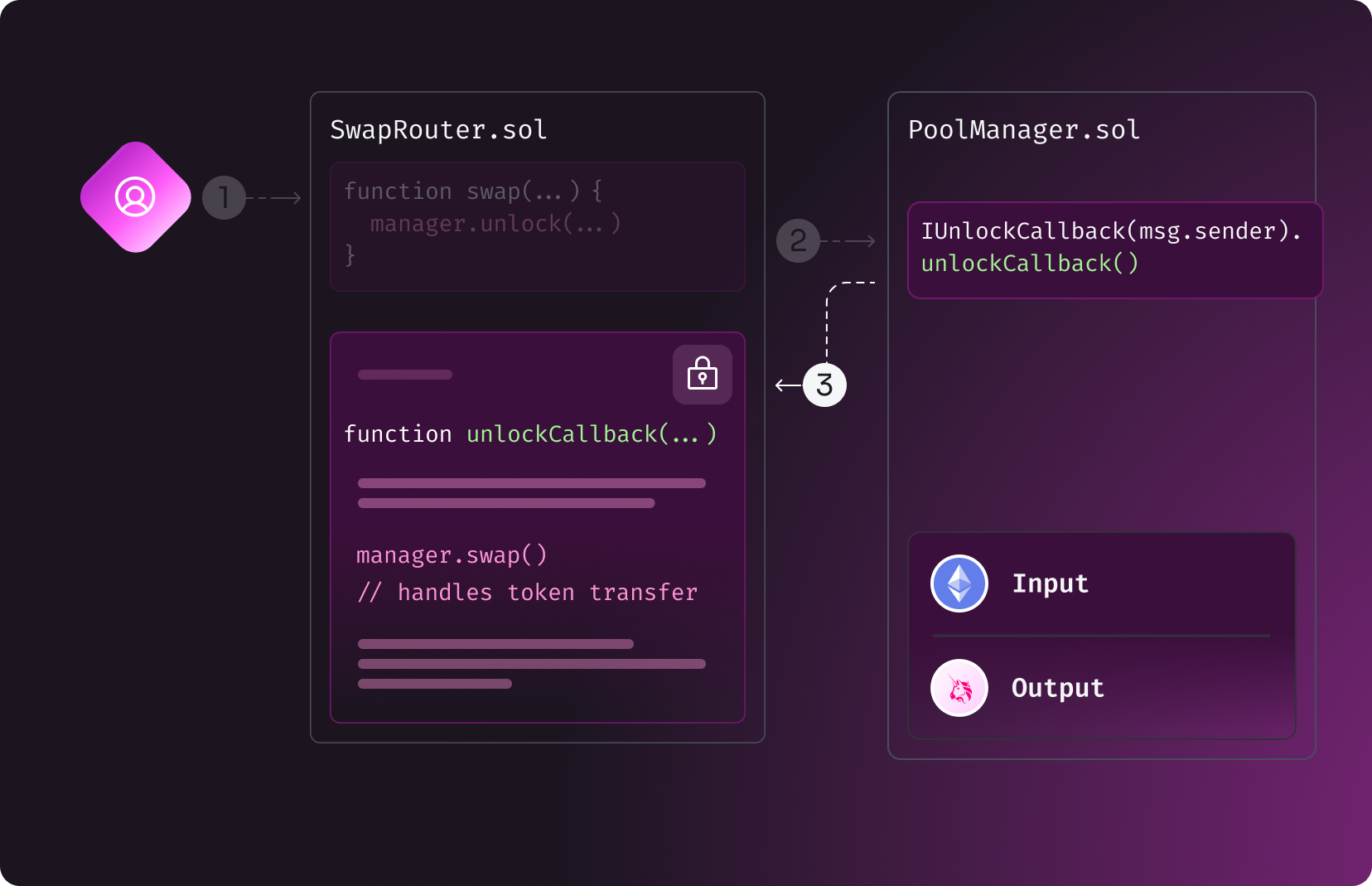
-
The actual token transfer happens at the end and the delta should be resolved
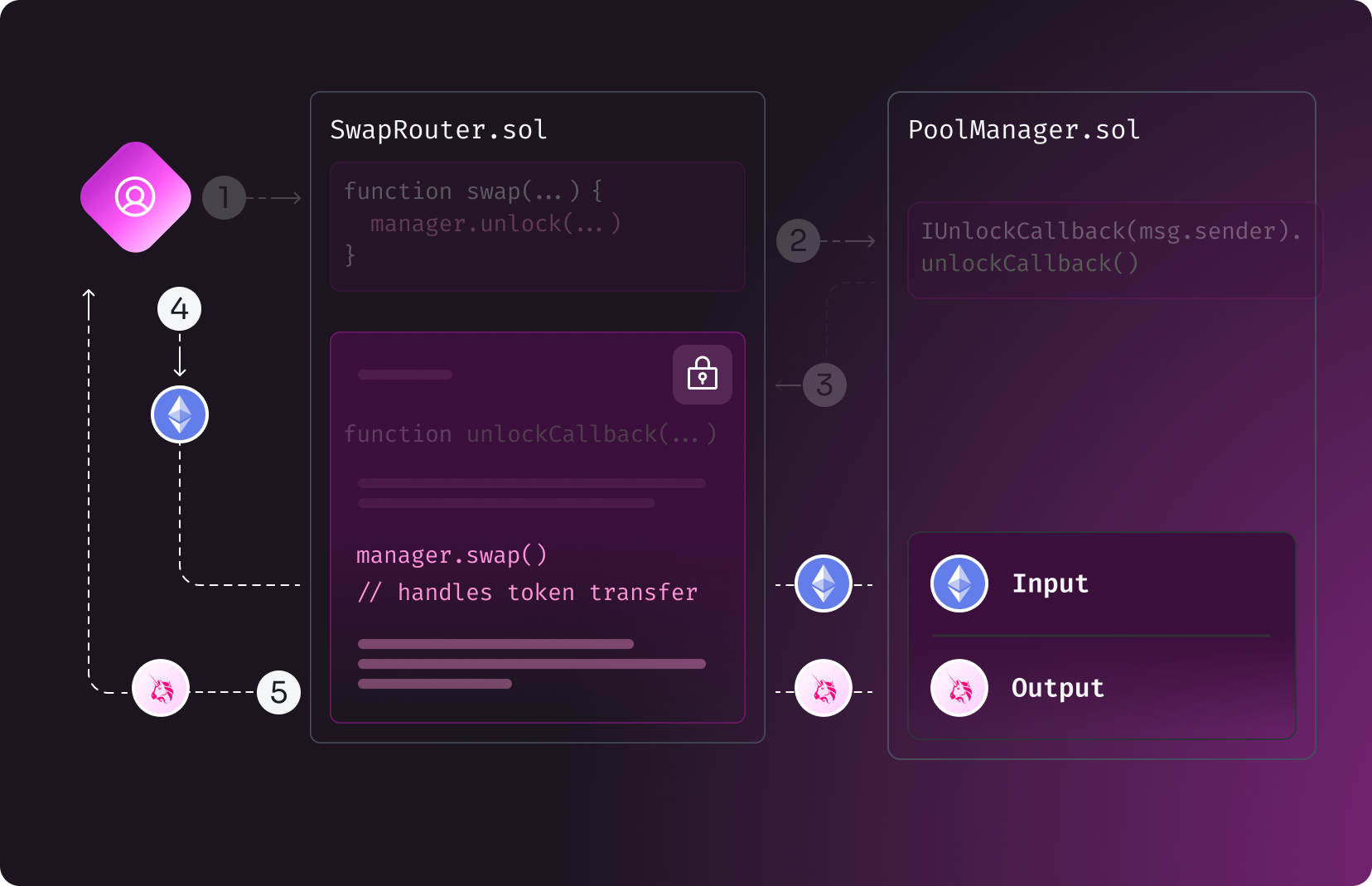
Balance Delta
Inside unlockCallback, a periphery contract performs balance-changing operations i.e. conduct swaps, modify positions, etc. After returning execution context back to PoolManager, the core contract checks that balances are resolved - nothing is owed to or from the PoolManager.
The balances resolved above is what we refer as the delta, a field held in the transient state. The value(s) represent the debts and credits of assets owed to or from the PoolManager.
Swapping
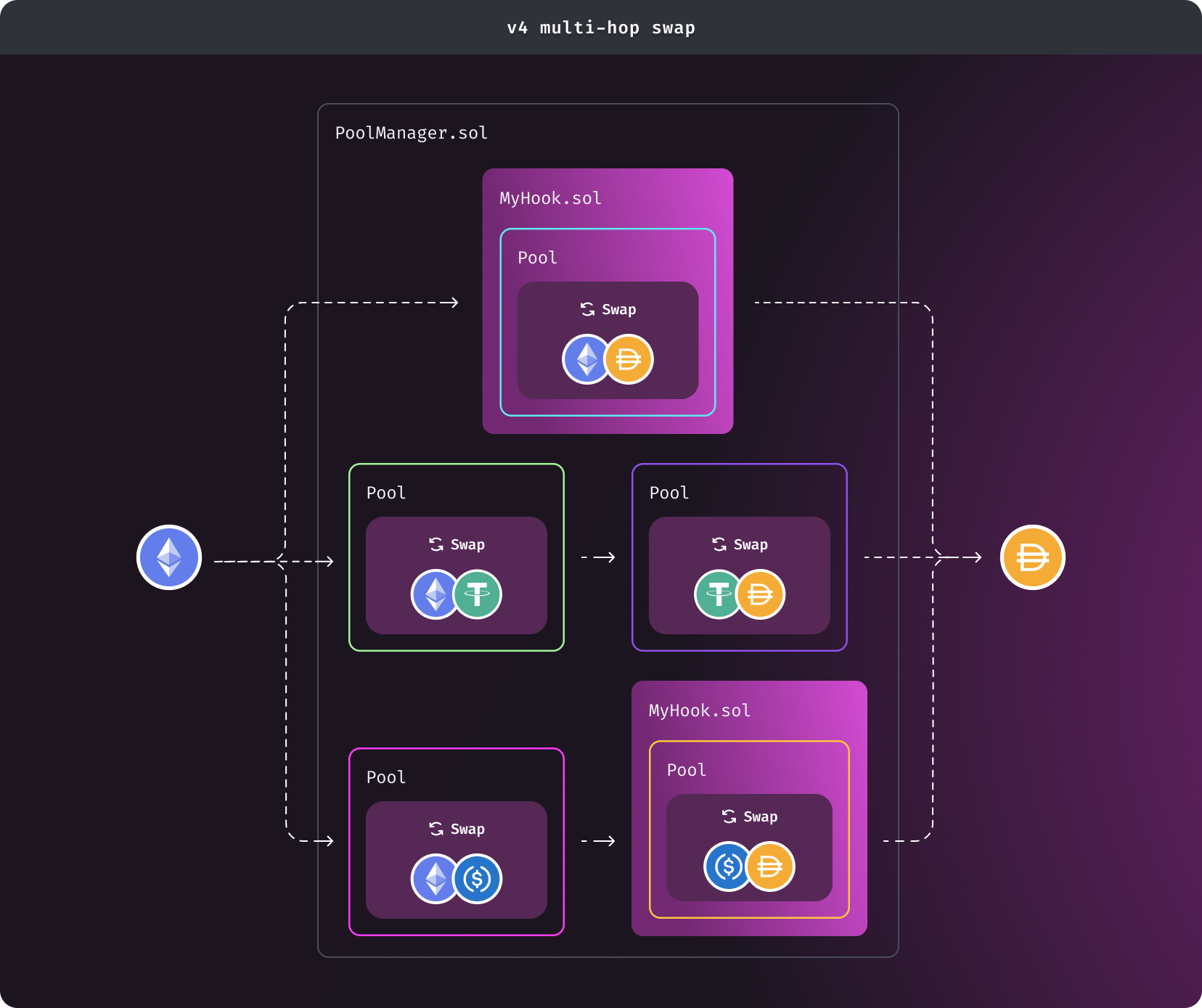
As shown in the above diagram, for example - let's say you want to swap ETH for DAI. Assuming this requires a multi-hop swap going from ETH to USDC and then from USDC to DAI.
Previously on v3
-
ETHis transferred toETH <> USDCpool contract -
USDCis withdrawn fromETH <> USDCcontract and transferred toUSDC <> DAIcontract -
DAIis withdrawn fromUSDC <> DAIcontract and transferred to the user
Now on v4
-
Call
swap()onETH <> USDC -
Call
swap()onUSDC <> DAI, with the credit of USDC from above being used as the input amount -
User resolves deltas by paying ETH and receiving DAI
Therefore we can skip the step of actually calling transfer() on the USDC contract.
The optimization scales infinitely, any number of arbitrary hops only requires two token transfers - input and output tokens.
Liquidity Management
The optimization becomes more evident for complex liquidity operations
For example, a user wanted to add liquidity to ETH <> DAI but does not have DAI. The user can swap some ETH to DAI in order to add liquidity with both tokens. In addition, the user can multi-hop swap going from ETH to USDC to DAI. If properly integrated, the user would only need to transfer ETH once.
Developer Resources
To see how unlock callback and delta work in a smart contract read Unlock Callback & Deltas.